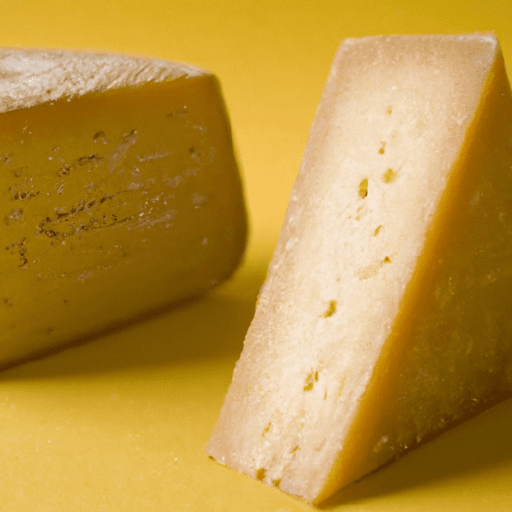Discovering Asiago Cheese: A Versatile Delight
If you’re a cheese lover, there’s one variety you simply cannot ignore – asiago cheese. This Italian delight offers a unique flavor and a textured experience that makes it incredibly versatile in the culinary world. Whether you’re grating it over pasta, melting it on a sandwich, or enjoying it on its own, asiago cheese brings a distinctive touch to any dish.
Taste and Texture
Asiago cheese is renowned for its rich, nutty flavor and exquisite aroma. Depending on the aging process, it can range from mild and smooth to sharp and crumbly. Younger asiago cheese tends to be milder, with a creamy texture and a subtle tang. As it ages, the flavors intensify, developing a slightly sharp and robust taste with a grainy texture.
Common Uses in Cooking
The versatility of asiago cheese makes it a staple ingredient in various dishes. Here are a few ways you can incorporate this delicious cheese into your cooking repertoire:
Pasta – Grated asiago cheese adds a delightful depth to pasta dishes. Sprinkle it over creamy spaghetti carbonara or toss it with buttered noodles for a simple yet satisfying meal.
Sandwiches and Paninis – Melted asiago cheese takes sandwiches to the next level. Whether you’re craving a classic grilled cheese or a gourmet panini, asiago’s distinctive taste will elevate your sandwich game.
Salads – Shave or grate asiago cheese over leafy green salads to add a burst of flavor. Its unique texture perfectly complements the crispness of fresh vegetables.
Cheese Boards – Arrange slices of asiago cheese on a cheeseboard alongside other varieties for an exquisite cheese tasting experience. Pair it with fruits, nuts, and honey to balance its robust flavor.
Baked Goods – Asiago cheese can also be incorporated into savory baked goods such as bread, biscuits, and scones. Its umami flavor adds a delightful punch to these treats.
Nutritional Value
Apart from its exceptional taste, asiago cheese also packs a nutritional punch. It is a fantastic source of calcium, providing around 20% of the recommended daily intake per serving. Asiago cheese is also a great source of protein and contains essential vitamins such as vitamin A, vitamin D, and vitamin B12.
However, it’s worth noting that asiago cheese is relatively high in fat, so enjoying it in moderation is key. By savoring it as part of a balanced diet, you can appreciate its flavor while reaping its nutritional benefits.
History and Fun Facts
Asiago cheese gets its name from the Asiago Plateau in Veneto, Italy, where it originated. Historically, it was produced by local shepherds to preserve surplus milk. Today, asiago cheese is protected by the European Union as a PDO (Protected Designation of Origin) product. This designation ensures that only cheese produced in the Asiago region according to specific standards can be labeled as authentic Asiago cheese.
Interestingly, there are two main types of Asiago cheese: fresh (Asiago Pressato) and aged (Asiago d’allevo). The fresh version is more delicate, while the aged variety is firmer and develops more complex flavors over time. Both types have their own unique characteristics, allowing chefs and culinary enthusiasts to experiment with their distinct qualities.
In Conclusion
Asiago cheese is a true culinary gem that brings an exceptional flavor to countless dishes. Its nutty taste, versatile nature, and intriguing history make it a cheese worth exploring in the kitchen. So why not embark on a gastronomic adventure and indulge in the wonders of asiago cheese? Whether you grate it, melt it, or savor it on its own, asiago cheese is sure to add a delightful touch to your culinary repertoire.
Asiago
Origin: Asiago is a semi-hard Italian cheese that originated in the Asiago plateau in the Veneto region of Northern Italy. It is named after the region where it was first produced.
Common Uses: Asiago cheese is widely used for culinary purposes. It can be enjoyed on its own, grated or shaved over pasta, risotto, salads, or soups. It can also be melted into sauces, used in sandwiches, or added to various dishes for an enhanced flavor.
Varieties: Asiago cheese comes in two main varieties: Asiago Pressato (fresh) and Asiago d’allevo (matured). The Pressato variety is smooth and mild, usually enjoyed as a table cheese or melted into dishes. The d’allevo variety has a stronger and sharper flavor, making it suitable for grating or shaving.
Nutritional Benefits: Asiago cheese is a good source of calcium, protein, and phosphorus. It also provides vitamins A and B-complex, as well as essential minerals like zinc and magnesium. However, it should be consumed in moderation due to its higher fat content.
Unique Properties: Asiago cheese has a firm and compact texture with a straw-colored or light-yellow interior. It has a distinct flavor profile that can vary depending on the age and variety. The more matured Asiago has a nutty and slightly tangy taste, while the younger variety is milder and smoother.
Historical Significance: Asiago cheese has a rich history dating back to the 10th century. It was initially made by the Cimbri and Rhaetian populations, ancient groups that inhabited the Asiago plateau. Over time, the cheese-making techniques spread throughout the region and became an essential part of the local culinary tradition.
Protected Designation of Origin (PDO): Since 1978, Asiago cheese has had a Protected Designation of Origin status, which guarantees its quality and authentic production methods. This designation ensures that only cheese made in specific areas of the Asiago plateau can be called “Asiago.”
Culinary Uses Beyond Italy: Asiago cheese has gained popularity beyond Italy and is used in various international dishes. It can be found in gourmet pizzas, salads, and sandwiches, adding a distinctive taste to the culinary creations from different regions around the world.




Use the share button below if you liked it.
It makes me smile, when I see it.